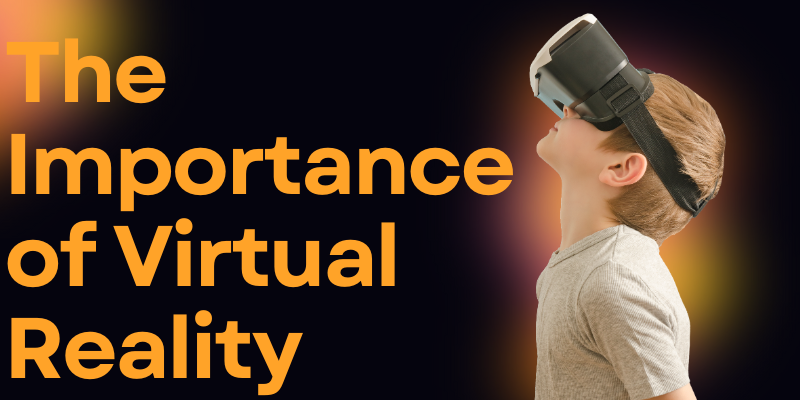What is Virtual Reality? A Simple Guide
Published: 27 Apr 2025
Virtual reality (VR) is revolutionizing the way we experience the world. By using a virtual reality headset and specialized technology, users are transported into stunning, immersive 3D worlds that react to their movements in real time.
Whether it’s playing virtual reality games near me, exploring virtual reality videos, or testing your skills in a virtual reality escape room, VR offers endless possibilities for entertainment, education, healthcare, and professional training.
The evolution of virtual reality Oculus headsets, virtual reality treadmills, and virtual reality 360 videos shows how far we’ve come-and it’s just the beginning.
In this article, I’ll take you deep into the world of VR based on personal experiences, real-life examples, and expert insights, ensuring you have a complete and enjoyable understanding of this incredible technology.
Virtual Reality- Definition and Overview
Virtual reality (VR) is a technology that allows users to interact with a computer-generated environment as though it were real.
Using equipment like headsets and controllers, users experience vivid 3D worlds that feel natural and responsive.
Personal Experience:
When I first tried a virtual reality headset in a local VR gaming center, I was amazed by how lifelike the environment felt-almost like stepping into another world.
Quick Definition in Bullet Points
- Virtual Reality (VR): Technology creating immersive, computer-generated environments.
- Interaction: Users manipulate 3D worlds via VR headsets, controllers, or hand tracking.
- Immersive Experience: Makes users feel like they’re inside a VR world.
- Applications: Used for gaming, education, healthcare, and more.
- Exploration: Experience virtual reality 360 videos and interactive environments from anywhere.
The Importance of Virtual Reality
Virtual reality is transforming how we interact with digital content. Its ability to create realistic simulations has revolutionized industries like education, healthcare, and entertainment.

Personal Experience:
During my university years, we used VR simulations to practice public speaking. Standing in a virtual conference room with an audience feltincredibly reala, and it helped me conquer stage fright!
Whether it’s training for surgeries, mental health therapy, or playing the latest virtual reality headset games, VR’s applications are limitless and growing rapidly.
Why Virtual Reality Matters (Bullet Points)
- Innovative Technology: VR is reshaping digital interaction.
- Education: Enables hands-on learning and immersive simulations.
- Training & Development: Safe environments for practice in medicine, engineering, and defense.
- Healthcare: Therapists use VR for pain relief and mental health treatment.
- Entertainment: VR redefines gaming, film, and live experiences.
- Future Impact: VR could soon transform real estate, architecture, and space exploration.
How Virtual Reality Works
Virtual reality works by creating 3D environments that users can interact with in real time.
A headset displays stereoscopic images that adjust to your head movements, while motion controllers or sensors let you engage with objects inside the virtual world.
Personal Experience:
I remember my first full VR experience using an Oculus Rift. As I reached out to “touch” virtual objects, the sensation was so real that I instinctively tried to grab them.
New technologies like virtual reality zero latency and virtual reality cameras are pushing realism even further.
Common Misconceptions About Virtual Reality
- Myth: VR is only for gaming.
Reality: VR is used in education, therapy, professional training, and design. - Myth: VR equipment is very expensive.
Reality: Many platforms offer affordable VR experiences. - Myth: VR causes constant motion sickness.
Reality: Thanks to better refresh rates (90Hz+) and improved designs, discomfort is now rare.
Troubleshooting Virtual Reality
Here are many high tech gadgets available in the market right now with have both pros and cons. Below are some ommon problems discussed.
Common Problems and Solutions
- Motion Sickness:
Problem: Dizziness or nausea.
Solution: Take breaks, choose a headset with a high refresh rate, and move slowly. - Tracking Issues:
Problem: Movements not detected properly.
Solution: Clean sensors, ensure proper lighting. - Poor Visuals:
Problem: Blurry images.
Solution: Adjust headset fit, clean lenses, tweak graphics settings. - Connectivity Problems:
Problem: Headset not connecting.
Solution: Check cables, Bluetooth, or restart devices.
Types of Virtual Reality
Different Designs for Different Needs
- Non-Immersive VR:
Traditional 3D environments on a screen (e.g., VR videos on a PC). - Fully Immersive VR:
Full 360-degree experience with headsets-great for gamers. - Semi-Immersive VR:
A mix of physical and virtual elements-useful in training. - Augmented Reality (AR):
Virtual elements layered on the real world (think AR shopping apps). - Mixed Reality (MR):
Real-time interaction with both physical and virtual elements (common in design fields).
Types of VR for Different Users
- Casual Users: Non-immersive VR or simple VR apps.
- Gamers: Fully immersive VR systems like Oculus.
- Professionals: Semi-immersive VR for training and practice.
- Everyday Shoppers/Tourists: Augmented reality.
- Architects/Engineers: Mixed reality for real-time project interaction.
Historical Evolution of Virtual Reality
The idea of VR started in the 20th century with simple visual simulations.
With technological advancements, headsets evolved to offer high-quality 3D graphics, motion tracking, and spatial audio.

Today, VR supports not just entertainment but crucial fields like education, therapy, and even space exploration.
It’s thrilling to think how in just a few decades, VR moved from science fiction to everyday reality.
Conclusion
Virtual reality is more than just a technological trend, it’s a transformative force across industries.
Whether you’re gaming, learning, or healing, VR offers an experience that feels real, interactive, and limitless.
If you’re even a little curious about this incredible technology, I strongly recommend trying a virtual reality headset.
My personal journey into VR opened up new worlds I never imagined and yours can too!
Dive into a VR game near you, explore an interactive virtual reality escape room, or simply enjoy virtual reality 360 videos your next adventure awaits.
FAQs
Virtual reality (VR) immerses users in interactive, computer-generated 3D environments.
VR tracks head movements and renders environments in real-time for an immersive experience.
Typically, a VR headset and, sometimes, controllers or sensors.
Yes, but regular breaks and clear surroundings are important.
VR enhances learning, training, therapy, and entertainment.
Absolutely-VR creates engaging virtual lessons and simulations.
Systems range from around
50 over
50 over 1,000 depending on features.
Non-immersive, fully immersive, augmented reality (AR), and mixed reality (MR).
Yes, in fields like healthcare, engineering, design, and education.
VR is set to revolutionize how we learn, work, and play.

- Be Respectful
- Stay Relevant
- Stay Positive
- True Feedback
- Encourage Discussion
- Avoid Spamming
- No Fake News
- Don't Copy-Paste
- No Personal Attacks

- Be Respectful
- Stay Relevant
- Stay Positive
- True Feedback
- Encourage Discussion
- Avoid Spamming
- No Fake News
- Don't Copy-Paste
- No Personal Attacks





